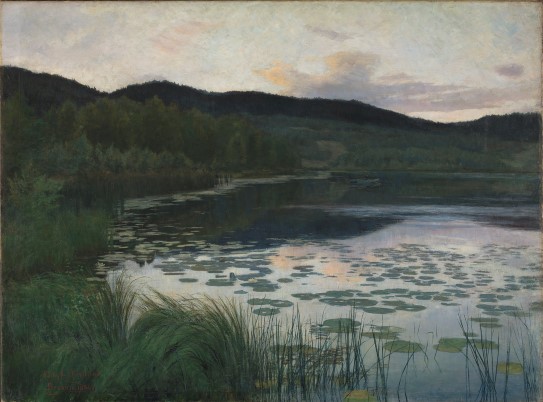Summer Night
Kitty Kielland
Transcription
Inger Gudmundson:
For Kitty Kielland, it was important to paint for an audience; it was important to be represented at exhibitions, in collections, because these were places for public self-expression, they weren’t places for displaying ornaments.
Narrator:
You are listening to Inger Gudmundson, a conservator at Stavanger Art Museum.
Inger Gudmundson:
She was a woman who started to paint at a time when it wasn’t possible for women to enrol at art academies. She went out into a landscape that no one had been in before, and she lived a life that was very radical compared to the lives of most women at that time.
Narrator:
Kitty Kielland was fascinated by the light of Norwegian summer nights.
Inger Gudmundson:
And she wrote about how the light subdued some colours in the landscape but intensified others. She wrote about the silence, about the need to stay awake all through the night, and about how this peaceful atmosphere almost got her to forget that sorrow exists in the world.
So she describes this melancholy and meditative atmosphere, which is a mood that she herself will come to paint later, and then in 1886, she produces Summer Night.
Narrator:
That summer, Kielland, and some of her artist friends, spent time painting at Fleskum Farm in Bærum, not far from Oslo. Here, down by Dælivannet, a local lake, the painting Summer Night was born.
Inger Gudmundson:
We see the glassy stillness of the water, we see the light evening sky, with pink and blueish-grey clouds reflected in the lake, and there’s that particular dusk light and the way it erases details, that is the dominant feature of the picture.